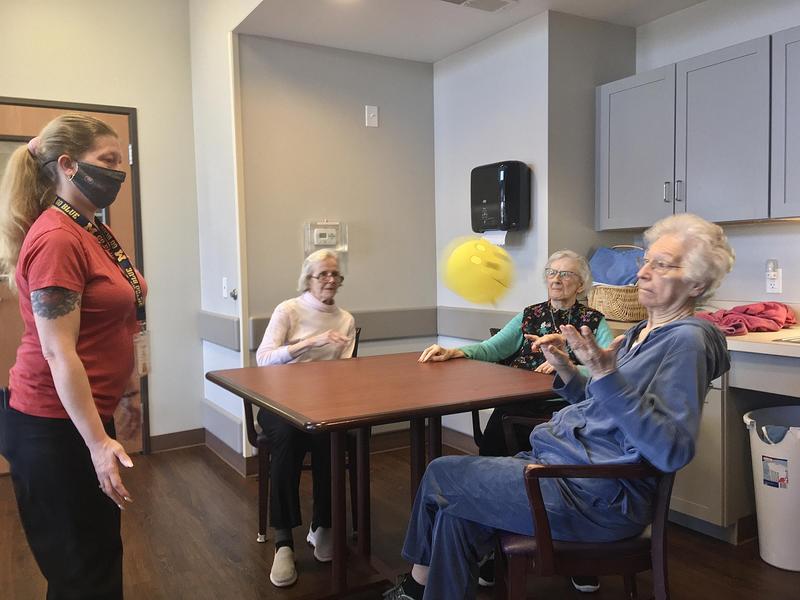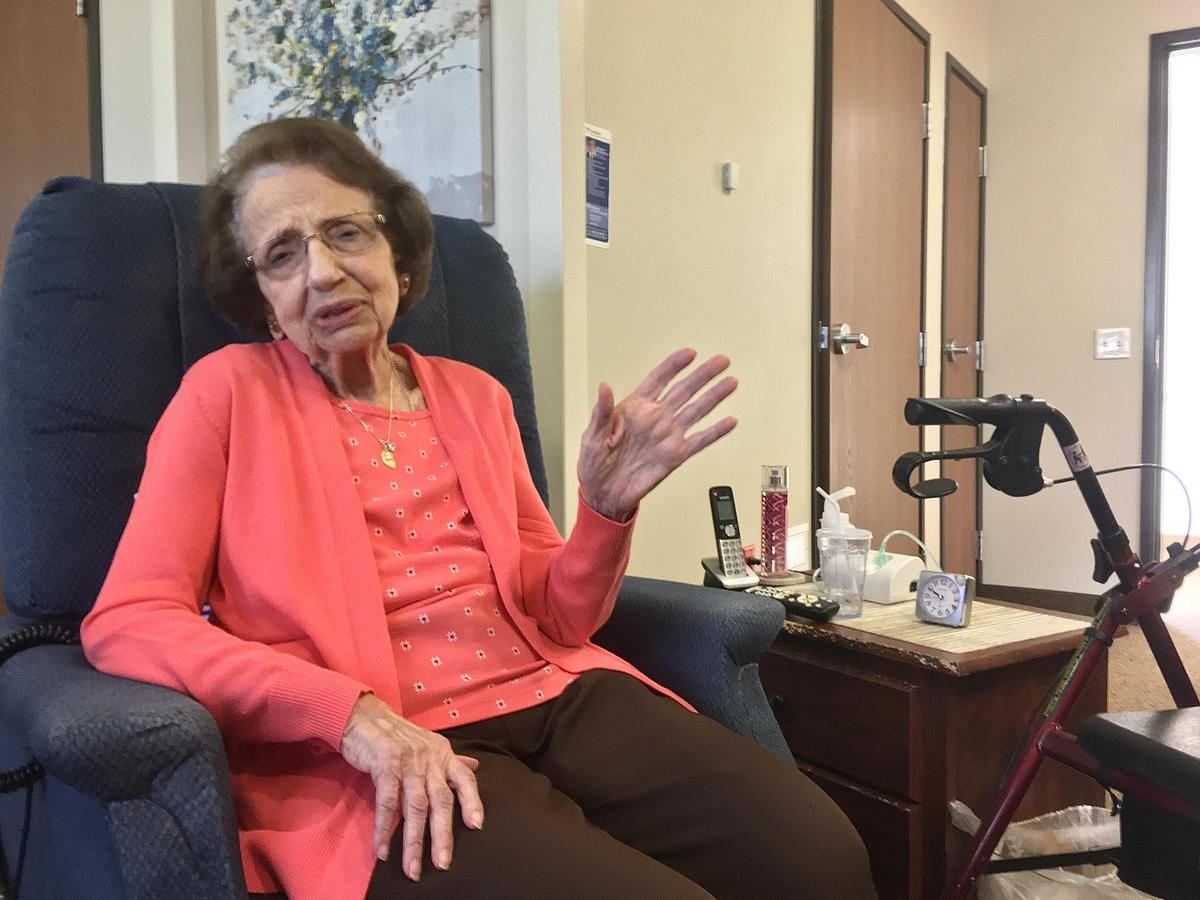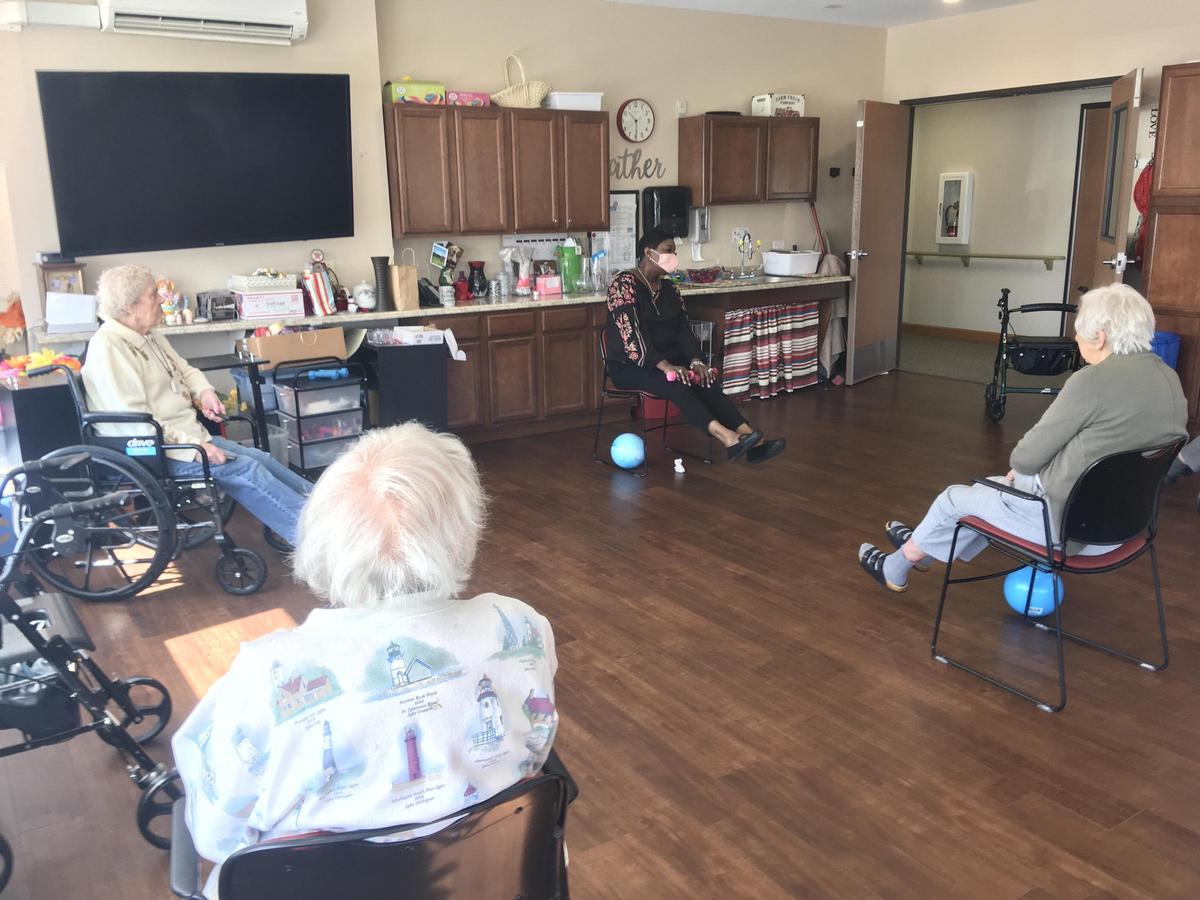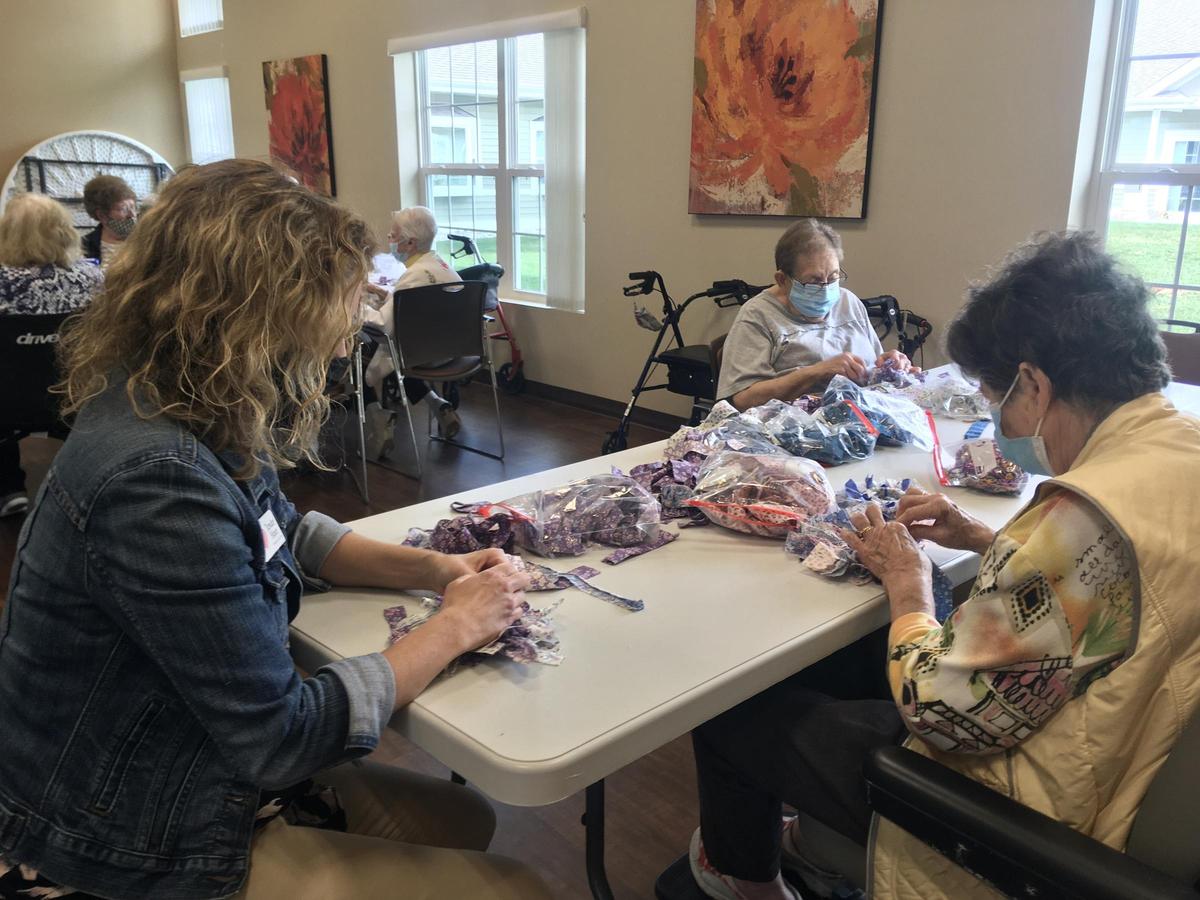After Months of Isolation, Life Starts to Return to Normal for Michiganders in Long-Term Care
People in long-term care facilities faced some of the highest risks from COVID-19. But now, many of those people are vaccinated.

Three women in their 80s and 90s are sitting around a table together, taking swipes at a bright yellow balloon emblazoned with a smiley face.
They’re all residents at New Hope Valley, an assisted living facility just outside Saginaw.
One of them, Margaret Clark, has a mean forehand.
The women are coached by Jamie Capp, who’s got them in a pretty intense game of keep-the-balloon-off-the-floor.
It’s a game they’ve only recently started to play again.
“The focus is on making sure that we bring life for the residents back to almost normalcy, without taking a risk in terms of their wellbeing and safety, right? So that’s a very delicate walk to walk.” –Rumi Shahzad, New Hope Valley
As COVID-19 swept through Michigan’s long-term care facilities, thousands of residents died. Capp says those who lived were forced by the pandemic into an isolated existence with little contact with anyone outside of their rooms.
“It took a toll on ’em. They want to be out and socializing with other residents,” she says.
It led to a decline in mental and physical health for a lot of people who were vulnerable to the virus and then also to loneliness. But now, things are finally starting to open back up.
“They need to be physically with their families,” she says.

One of those residents who’s finally starting to see her family in person again is Anna Provenzano.
“I’m gonna be 91. May the 20th, I’ll be 91. I never thought I could,” she says.
She spent months with almost no human contact and nothing to do.
“Really and truly, hardly nothing. We couldn’t leave our rooms, and they couldn’t really come in,” she says.
To pass the time, she watched movies on the Hallmark channel.
“I know every Hallmark movie that was ever made. You want to know the end? They kiss. Every movie.”
But as soon as a vaccine became available, Provenzano jumped at the chance to get it. She’s now among the 98% of residents here who the facility says are vaccinated.
Provenzano can now hug her children and grandchildren but the family’s still worried about the virus, so they have their own rules about kisses from grandma: only on the forehead. Provenzano says they’re a little over the top about safety, but she’s glad for their concern.
“They’re not taking any chances,” she says.
The home’s director, Rumi Shahzad, says it is a tough balance between opening the facility up and keeping residents in here safe while COVID-19 is still spreading outside.
“The focus is on making sure that we bring life for the residents back to almost normalcy, without taking a risk in terms of their wellbeing and safety, right? So that’s a very delicate walk to walk,” Shahzad says.

Almost all of the residents are vaccinated, but only about 60% of his staff. But he says that number is slowly creeping up as people who were hesitant see their colleagues and their families and friends get vaccinated without problems.
“So, yes, some have come around, and I’m hoping that more of them will come around as the year progresses,” he says.
This is a pretty common feeling among administrators at long-term care facilities, says Melissa Samuel, the CEO of the Health Care Association of Michigan, which represents assisted living and nursing homes in the state.
Samuel says people do change their minds.
“It’s all about education. Definitely out of the gate, particularly with staff, I think there was hesitancy. Now, we’re starting to really get some good information out there. We’re getting some good public service. We’re getting leaders in the community,” she says.
Each additional person vaccinated reduces community spread, and that reduces the chances that the virus will enter a nursing home. It’s another bit of protection for the people eating lunch together in the dining hall just down the corridor from Anna Provenzano’s room.
And a bit further down the hall, there’s another activity made possible by vaccination: a dozen people together in an exercise class.
Instructor Victoria Lee has them moving to some Johnny Cash.

Betty Therrien, one of the residents in Lee’s class, says getting the human interaction is great, but she also likes the return of physical activity.
“I like the stretching part. Because we sit so much. It feels good. The arms and the legs, it makes you feel very good,” she says.
Many of the people here who spent months in near solitude waiting for vaccines to be developed, tested and authorized — and can’t fathom why someone wouldn’t get the shots.
Larry Mey is 85 and got his doses as soon as he could.
“I’m disappointed that some people say they don’t want to get vaccinated because they’re afraid. There’s nothing to fear,” he says.
Mey was a pharmacist before he retired. He says he’s seen the roll-out of other new vaccines for diseases like chicken pox and pertussis, and he wants residents and staff here who have gotten this new vaccine to tell their friends and families.
Mey says showing people it’s normal and safe is what helps new vaccines become accepted. And that means a return of balloon games and exercise classes and all the other things that are “normal” for seniors and their families.
Listen: The tough balance between reopening and keeping residents safe.
Trusted, accurate, up-to-date
WDET is here to keep you informed on essential information, news and resources related to COVID-19.
This is a stressful, insecure time for many. So it’s more important than ever for you, our listeners and readers, who are able to donate to keep supporting WDET’s mission. Please make a gift today.

